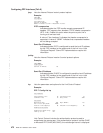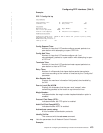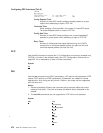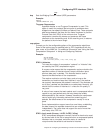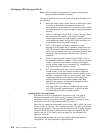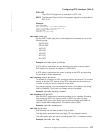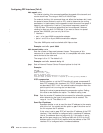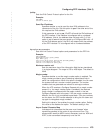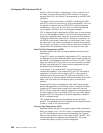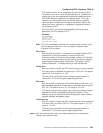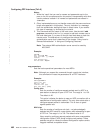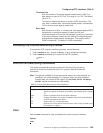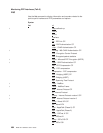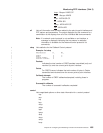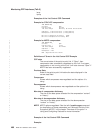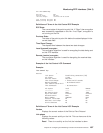Specify a 32-bit bit mask in hexadecimal. If a bit in position ’N’ of
the mask is set, the corresponding ASCII character ’N’ must be
escaped (the LSB is bit number 0, corresponding to the ASCII NUL
character).
The default value for this option is ’0A0000’, indicating that XON
and XOFF (control-Q and control-S) need to be escaped. This is for
the benefit of modems that use XON/XOFF to perform software
handshaking. If this is not an issue, then it is recommended that
you change the ACCM to zero (no characters escaped).
LCP is always willing to negotiate the ACCM, even on synchronous
lines, and the list lcp command in the PPP monitoring process will
display the negotiated value. However, synchronous lines employ a
“bit-stuffing” mechanism rather than an “escaping” mechanism, so
the ACCM is not normally meaningful on synchronous lines. It may
be meaningful if the router is connected to a modem that performs
sync-to-async conversion, in which case its value should reflect the
requirements of the attached modem on the asynchronous side.
Addr/Cntl Field Compression (ACFC)
Specifies whether the peer can employ address and control field
compression.
If the ACFC option is successfully negotiated by LCP, it means that
the Address and Control field bytes which start off each packet may
be omitted in the datagrams sent back and forth on the link. These
bytes are always 0xFF 03, so there is no real information provided
by them, and enabling ACFC means that the datagrams that are
transmitted will be two bytes shorter.
To be precise, if you enable ACFC, you are indicating a
receive-side capability. If you enable ACFC and LCP successfully
negotiates it, the other end can employ ACFC in the packets it
transmits to the local end (most PPP options work like this). The
local end will only transmit packets
without
the address and control
fields if the other end also indicates its ability to handle such
packets.
Enabling ACFC does not obligate the other end to send packets
without the address and control fields, even if it accepts the option.
Enabling ACFC merely tells the peer that it optionally
may
use
ACFC, and the router will be able to handle the incoming packets. If
the peer indicates that it can handle ACFC, then the router always
performs ACFC on the packets it transmits regardless of whether
ACFC is enabled locally.
LCP packets always are sent with address and control fields
present. This guarantees that LCP packets will be recognized even
if there is a loss of link synchronization.
Protocol Field Compression (PFC)
Specifies whether the peer is to employ protocol field compression.
When you specify “yes”, if the PFC option is negotiated successfully
by LCP, the leading zero byte may be omitted from the “Protocol”
field for those protocol values in the range ’0x0000’–’0x00FF’, for a
one byte savings in the packets being transmitted. This range
includes the majority of layer-3 protocol datagrams.
Configuring PPP Interfaces (Talk 6)
480
MRS V3.2 Software User’s Guide



